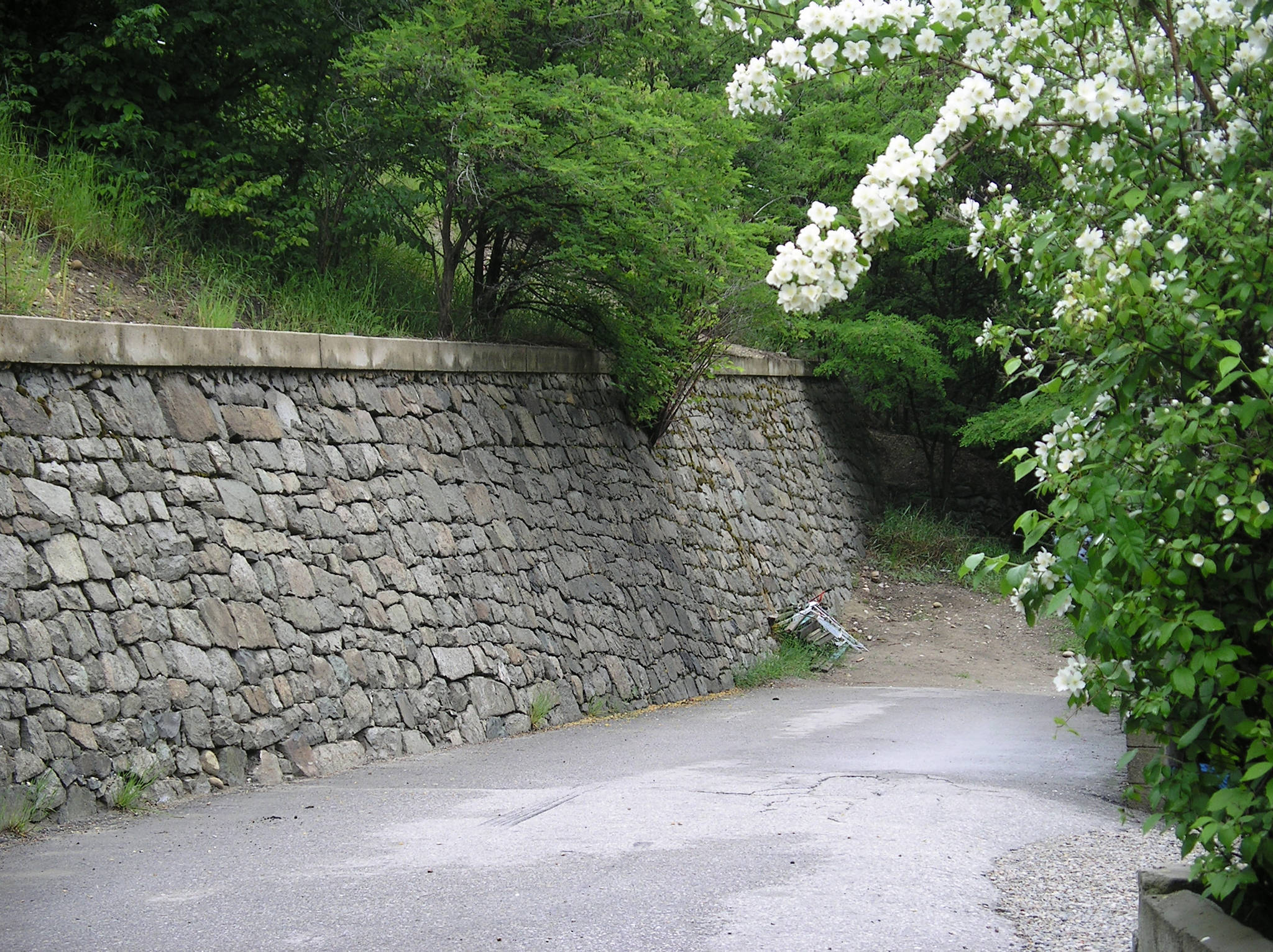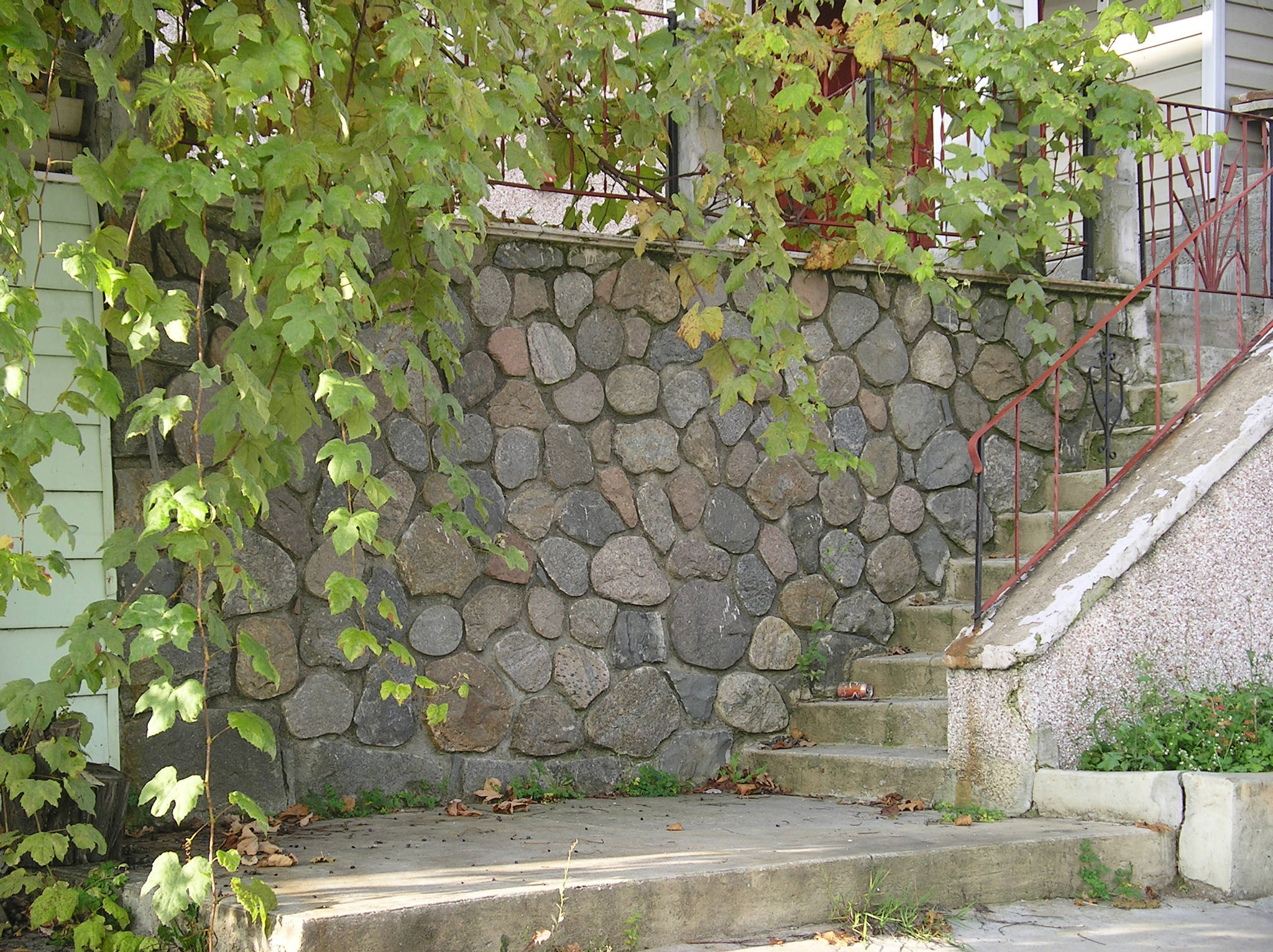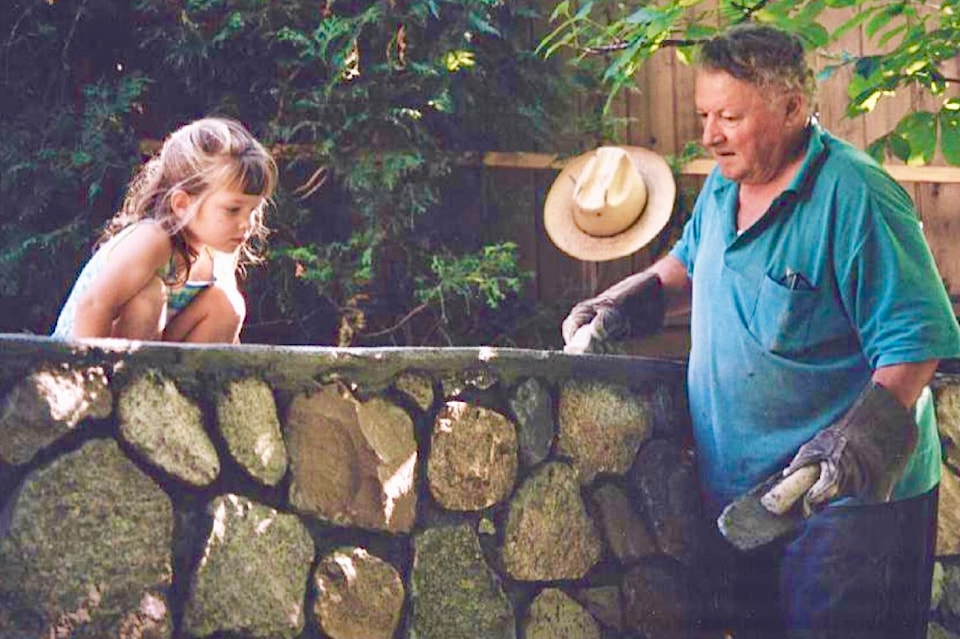By Eileen Truant
Unless you are of First Nations descent, your roots are in some other continent.
Oftentimes, someone from your past risked crossing an ocean to get here and in doing so, left their original family behind.
This is certainly how I came to be born in North America, and most likely, you too.
Imagine.
What was it like to say goodbye to mothers, fathers, grandparents, siblings, and often girlfriends or wives and children, not knowing what’s in store for you, and, not knowing when or even IF, you will ever see your family again?
These memories are what brought a lump to Louie Bedin’s throat when I interviewed him about 15 years ago in Trail for the book “Set in Stone~A History of Trail’s Rock Walls.”
Louie was a skilled tradesman in Italy.
He knew the rock.
He began his apprenticeship with a fellow nicknamed “Cribbo”, who Louie’s family hired to construct another home when the 15 family members needed more space. His and his uncle’s family lived together in a three-storey home built of stone; they ate in shifts.
Louie assisted Cribbo: “In those days the walls were made with rocks, and lime and sand made into mortar. On the corners and on the windows they used blocks or bricks, but the rest of the wall is made out of rock. Because we were close to a river, it’s nothing but rocks. Every time you plough a field, you save two or three wood wagons full of rocks. These were used later, on the new house, and that was when I learned my trade.”
Mortar was expensive and so they mixed their own by purchasing dehydrated rocks (baked in furnaces and cooled) and adding equal parts of water, lime, and sand: “You dig a pit next to the building site about four feet deep, six feet wide, and eight feet long, where the dehydrated rocks are dumped. You start feeding them water, adding more and more. They react like crazy! They get so hot because of the chemical reaction and they blow up like a volcano. And they disintegrate, becoming like butter…..You keep working it with a hoe until you get this nice pliable mixture.”
Stone masonry suited him more than farming the land.
Under Cribbo’s guidance, Louie had helped build four more stone houses before he turned 19 on September 25, 1956.
Now, Louie faced conscription into the Italian military.
He had a decision to make. Canada, hungry for skilled tradespeople, recruited through the Canadian Embassy in Castel Franco, close to Venice.
“I go down there with my papers and the officer said ‘When do you want to leave?’”
Louie would be exempt from the Italian army after two years in Canada.
And, the Italian government received a sum of money for each trades person they sent overseas.
Luigi Giorgio Bedin said goodbye to his family on April 9, 1957, 64 years ago to the day, just recently.
He arrived in New York, was placed on a box-car, and was accompanied by police until he reached Canadian soil. He crossed the country by rail and waited about six hours with his suitcase for the train to Castlegar, 30 minutes from Trail.
Almost immediately, Louie constructed rock walls for the city’s parks board, and later for the city.
Though work was sporadic, he made his mark building dry rock walls to uphold banks and roads, and mortared ones as well, many times with no machinery.
The rocks would be dumped at the site.
The stonemasons would choose each rock, building the foundation first (which extended under the road about half way). The chosen rock would then be “barred” onto a spot where it could be split safely— several men working long heavy iron bars in unison to inch it into place.
Huge boulders were split using the ‘feather and wedge’ technique, coupled with a large sledge hammer.
It sometimes took an entire day to split a boulder. Can you imagine how repeatedly pounding those enormous rocks would reverberate throughout one’s body? Louie: “I was shaking at night. It’s all slave work, you know, the bar, pushing and pulling the rock. It is hard work.”
Louie worked for a while on the Gyro Park stone ‘Bleachers’ with Steve Como and Bill Di Domenico, then went on to construct Gyro’s dry retaining walls along Charles Lakes Drive.
And you MUST visit “B” Street Park to experience the long set of stone stairs that unite two of the park’s levels, built by Louie and Steve Como.
Absolutely stunning.
Trail has a couple of streets that are divided into 3 or 4 parts due to subsequent intersecting road construction.
Bay Avenue is one.
It starts downtown and carries on up the West Trail mountainside.
Louie built both retaining walls for the mountain section of Bay Avenue between Topping and Daniel streets in 1958.
In East Trail is the very handsome Fifth Avenue Hill, 366-foot, support wall he built in 1960 with elderly stonemason Frank Balkovec.

“All plank work there. We used to push up the rock on a plank and try and straighten it up and just put it on the wall. Then, go back down and get another one. You know, you try to avoid the big ones. Once you got the machine, then it was a picnic, really, in comparison.”
This wall reaches a height of 11.5 feet.
It’s a beautifully-battered work of art.
The “Spaghettini Shuffle” walking tour [brochure at Trail library] will take you right to it.
Still visible in many parts of the city are double-sided rock in mortar guard rails built atop dry rock retaining walls, usually along sidewalks. Louie perfected these adding a peaked cap to keep kids off.
Safety was of course an issue working with stone.
Chips flying, fingers crushed between a bar and a rock, slipping on snow, and safety glasses that were a nuisance—they were oftentimes removed, only to experience grains of dirt in your eye.
Louie recalls one man complaining: “I did the whole war and never got wounded and here I am wounded in the ditch!”
Louie was a Trevi Fountain FULL of information regarding stone construction.

Not only is his Glenmerry home adorned with stunning stonework, his split river rock creations beautify area residents’ homes. One he built for his future in-laws back in the early 60s, and another for his daughter Christine’s home in 2003.
He proudly allowed us to video record the progress of the latter one and supplied the information needed to include this process in the book under: Building a Split River Rock Wall.
His impactful work as a stonemason for Trail was short-lived when he was offered a permanent job in 1963 at Cominco.
He had been employed there previously, and at the pulp mill in Castlegar, but none of it was enduring. Even stone work was seasonal. So it was a relief to be offered full time employment and he gratefully accepted.
Notably, mostly Italian and Eastern European men were relegated to stone worker status.
None of them acquired a ‘supervisory’ position. Instead, they painstakingly and proudly built the walls that literally uphold our hilly European-style town.
We honour them and we honour their work.
Thank you Louie ‘dei Occi’ Bedin! (Most Italian families have nick names!)
READ MORE: Paying homage to a cherished Trail stonemason
READ MORE: TV show features Trail’s rock walls
newsroom@trailtimes.ca
Like us on Facebook and follow us on Twitter
